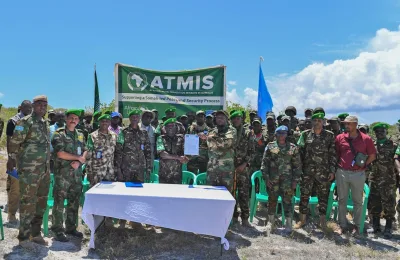The war in Yemen, pitting supporters of the president against Houthi rebels, has reversed the refugee…

The war in Yemen, pitting supporters of the president against Houthi rebels, has reversed the refugee flow in the region, which previously saw refugees flee the Horn of Africa for Yemen, where they accounted for nearly all the 250,000 refugees registered in the Gulf country.
Ethiopian migrants determined to cross to the war-torn Yemen continue to stream into the Somali autonomous region of Puntland.
For many years, Tens of thousands of African migrants risked their lives to try and enter Yemen on unseaworthy boats in search for a better life. Many die atrocious deaths – beaten, thrown overboard, eaten by sharks, drowned or asphyxiated in the hold of crowded smuggler boats.
Impoverished Yemen is mainly used as a transit country, with African migrants often aiming to move on to neighbouring oil-rich Gulf nations to find work.
In April, when war erupted in Yemen many hundreds of thousands of people escaped the violence to peaceful neighbouring countries, including Somalia. Those who ran away from the conflict include Yemeni citizens.
On the main highway linking Garowe, Puntland’s capital to the commercial hub Bossaso, hundreds of migrants are seen enduring a road journey in the searing heat of summer that will take not less than two weeks. The migrants, visibly exhausted, wave hands to vehicles for food and water.
Horseed Media has learnt that some of the migrants arriving are not well informed on the current situation in Yemen, and due to the difficult life in their homeland they are encouraged to take the risks. Others it is their second time risking their lives to reach wealth countries like Saudi Arabia again after they were deported.
Some describe this journey as the ”path of death” due to the chaos in Yemen.
The difficulties of the immigrants
The migrants, including young men and ladies – mostly from the Oromo ethnic group – undergo harsh conditions while en route to Yemen from their motherland. A man’s difficult situation they say, confines him in a struggling mood to find a better breeze of live.
Most of those coming to Puntland, Somalia are seeking escape from harsh, oppressive and undesirable conditions elsewhere (mainly in Ethiopia). They use Puntland, Somalia as a transit territory to Yemen and the Gulf States. However, it takes them as long as a month to arrive in the port town of Bossaso. They are sneaked to Puntland by Lorries and trucks who if caught by the Police will be heavily fined due to the smuggling of illegal persons.

Following their arrival in Bossaso, the migrants do not have accommodation and therefore till their next journey to journey will be forced to sleep in the streets, while some of them are lucky enough to get makeshift tents.
Some seek employment as casual labourers or domestic servants but this is mostly temporary to save enough money for the journey to Yemen. Many migrants have to work for over a year in Puntland to make enough money for the journey to Yemen.
Residents in various neighbourhoods have raised concerns due to their poor sanitation, which they fear that it will lead to the breakout of dangerous diseases.
A journey into the unknown
In 2013 Saudi Arabia, the preferred country of destination for the majority of migrants and Yemen’s northern neighbour, instituted a change in its labour and immigration policies. It closed its border with Yemen, stranding many migrants in the northern governorate of Hajjah, and began the expulsion of irregular migrants within its territory. With the border closure prohibiting their onward movement and more people arriving each day, the number of migrants stranded at the Yemeni border crossing at Haradh reached an estimated 25,000 in May 2013.
Saudi Arabia, who is leading the coalition against the Houthis closed its border with Yemen since the conflict started in April due to security concerns and afraid of militants to cross and carryout attack in its territory.
In July, the U.N. refugee agency warned refugees and migrants from the Horn of Africa not to make the perilous journey across the Red Sea to Yemen. The UNHCR says thousands of people continue to arrive in the country despite the dangers.
There are concerns that they might end up in the hands of the Iran-backed militias Houthis, who will use them as shields and take them to front lines to fight against their rivals.
Mixed migration is, clearly, a regional phenomenon, as much influenced by the social, political and security contexts of the countries of origin as the attractions offered by those of destination. Therefore, interventions which aim to minimise the migration flow – justified on humanitarian grounds, given the protection risks encountered by those who join it – must have a regional dimension.
Horseed Media







